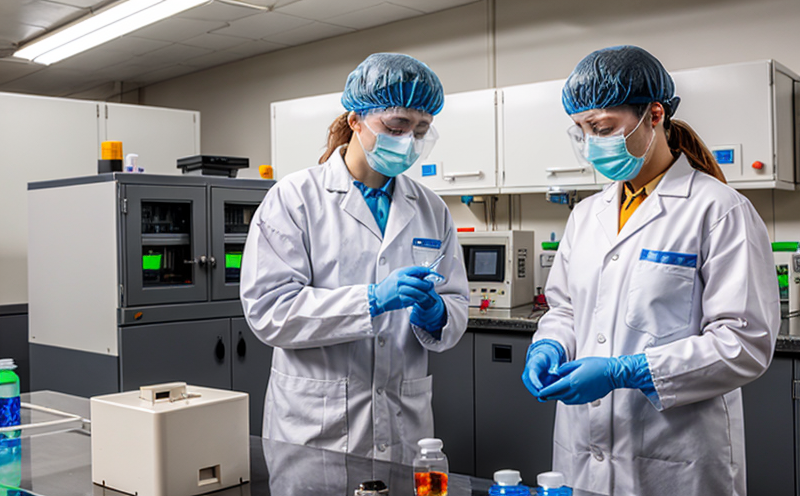EN 19544 Acrylamide Testing in Snack Bars
The European Standard EN 19544 provides a harmonized method to determine the acrylamide content in various food products, including snack bars. This standard is particularly important for the food and feed testing sector as it helps ensure product safety by minimizing exposure to potentially harmful contaminants. Acrylamide forms during high-temperature cooking processes like frying or baking, which are common methods used in producing snack bars.
Acrylamide has been classified as a possible human carcinogen (Group 2B) by the International Agency for Research on Cancer (IARC). Therefore, compliance with EN 19544 is crucial to maintain product quality and safety standards. This standard not only addresses the need for accurate quantification but also sets limits to ensure that acrylamide levels in snack bars do not exceed safe thresholds.
The testing procedure outlined in EN 19544 involves several key steps: sample preparation, extraction of acrylamide from the sample matrix, and its detection using a specific analytical method. Sample preparation typically includes grinding or chopping the snack bar into small pieces to ensure uniformity before extraction. Extraction methods may vary but often involve solvent-based techniques aimed at releasing acrylamide from the food matrix.
The chosen analytical technique for quantifying acrylamide in snack bars is typically liquid chromatography with tandem mass spectrometry (LC-MS/MS), which provides high sensitivity and selectivity. This method ensures accurate measurement even when dealing with trace amounts of acrylamide present in the sample.
After extraction and analysis, laboratories must generate detailed reports that include raw data, calculated concentrations, comparison against set limits, and interpretations based on these findings. Compliance officers can use this information to make informed decisions regarding product reformulation or process adjustments aimed at reducing acrylamide levels.
The implementation of EN 19544 in snack bar production processes is essential for maintaining consumer trust and ensuring regulatory compliance across the European Union (EU). By adhering to this standard, manufacturers can demonstrate their commitment to producing safe and high-quality products.
Applied Standards
| Standard | Description |
|---|---|
| EN 19544-3:2016 | This part of the standard specifies procedures for the determination of acrylamide in food products, including snack bars. |
| ISO 7869:2007 | A related international standard that provides guidelines for sampling and preparation of samples before analysis according to EN 19544. |
| ASTM E371-18 | An American standard used in conjunction with other standards like EN 19544, providing additional methods for the analysis of acrylamide. |
The harmonized approach provided by these standards ensures consistency and accuracy in testing across different regions. Compliance with such standards is vital not only within Europe but also globally as many countries adopt similar regulations to protect public health.
Benefits
Implementing EN 19544 acrylamide testing in snack bars offers numerous benefits for food manufacturers:
Enhanced consumer trust: Demonstrating compliance with stringent international standards reassures consumers about the safety of their products.
Risk management: By identifying and quantifying acrylamide levels, risks associated with potential health impacts are minimized.
Regulatory compliance: Ensuring adherence to EU regulations helps avoid penalties and maintains market access for export markets.
Innovation opportunities: Understanding acrylamide formation mechanisms allows manufacturers to innovate safer production processes.
In summary, adopting EN 19544 ensures a robust framework for testing acrylamide in snack bars, which ultimately leads to improved product quality and safety.
Use Cases and Application Examples
The application of EN 19544 is particularly relevant during the development stages of new snack bar products. Manufacturers can use this standard to:
Determine initial acrylamide levels in prototype formulations.
Optimize cooking processes by adjusting temperature and time parameters without compromising flavor or texture.
Identify raw materials contributing most significantly to acrylamide formation, enabling targeted ingredient substitutions.
Monitor compliance during large-scale production runs through periodic testing of representative samples.
In addition to R&D applications, ongoing monitoring via EN 19544 is essential for quality control departments. Regular audits help maintain consistent acrylamide levels throughout the supply chain and shelf life of products.





